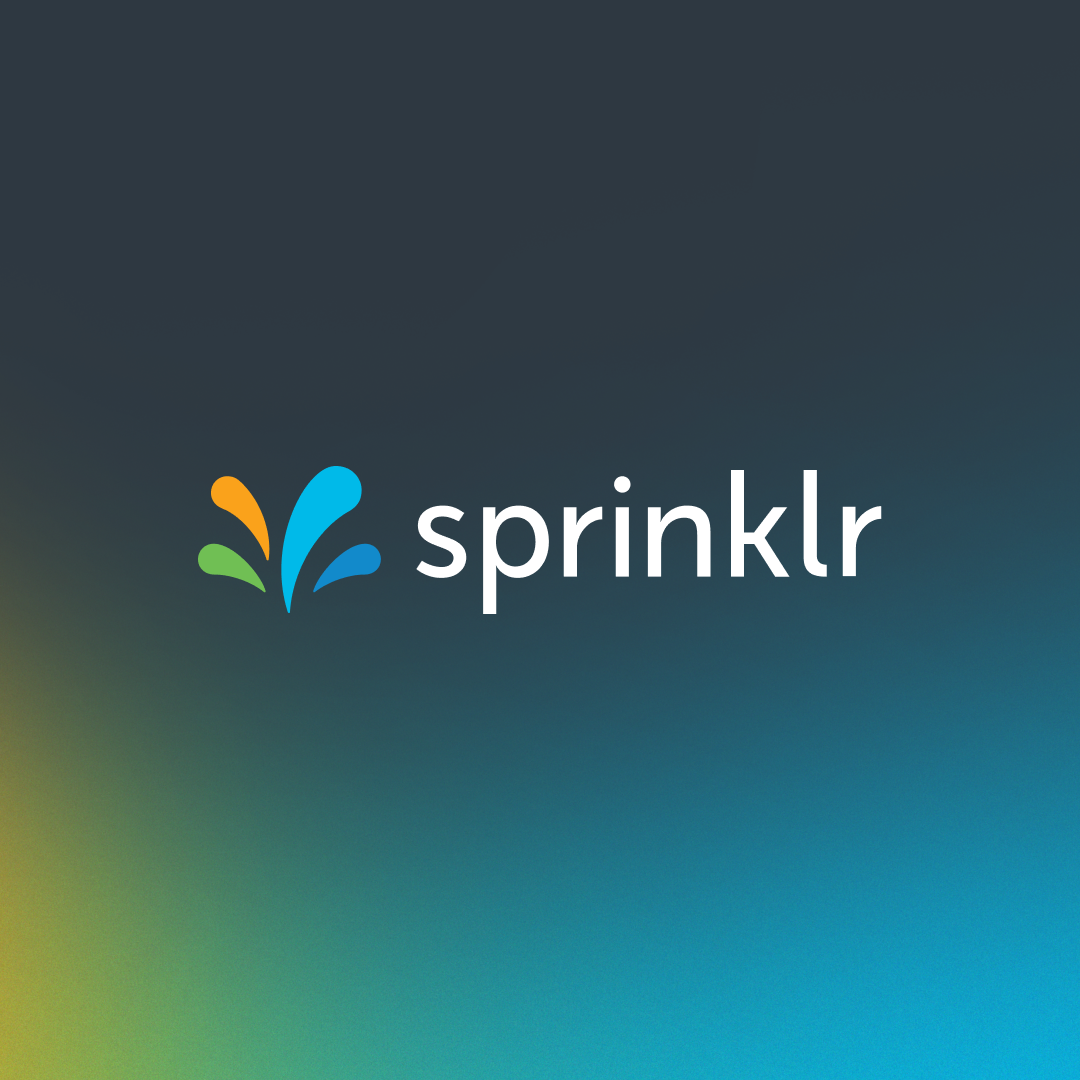Transform CX with AI at the core of every interaction
Unify fragmented interactions across 30+ voice, social and digital channels with an AI-native customer experience platform. Deliver consistent, extraordinary brand experiences at scale.
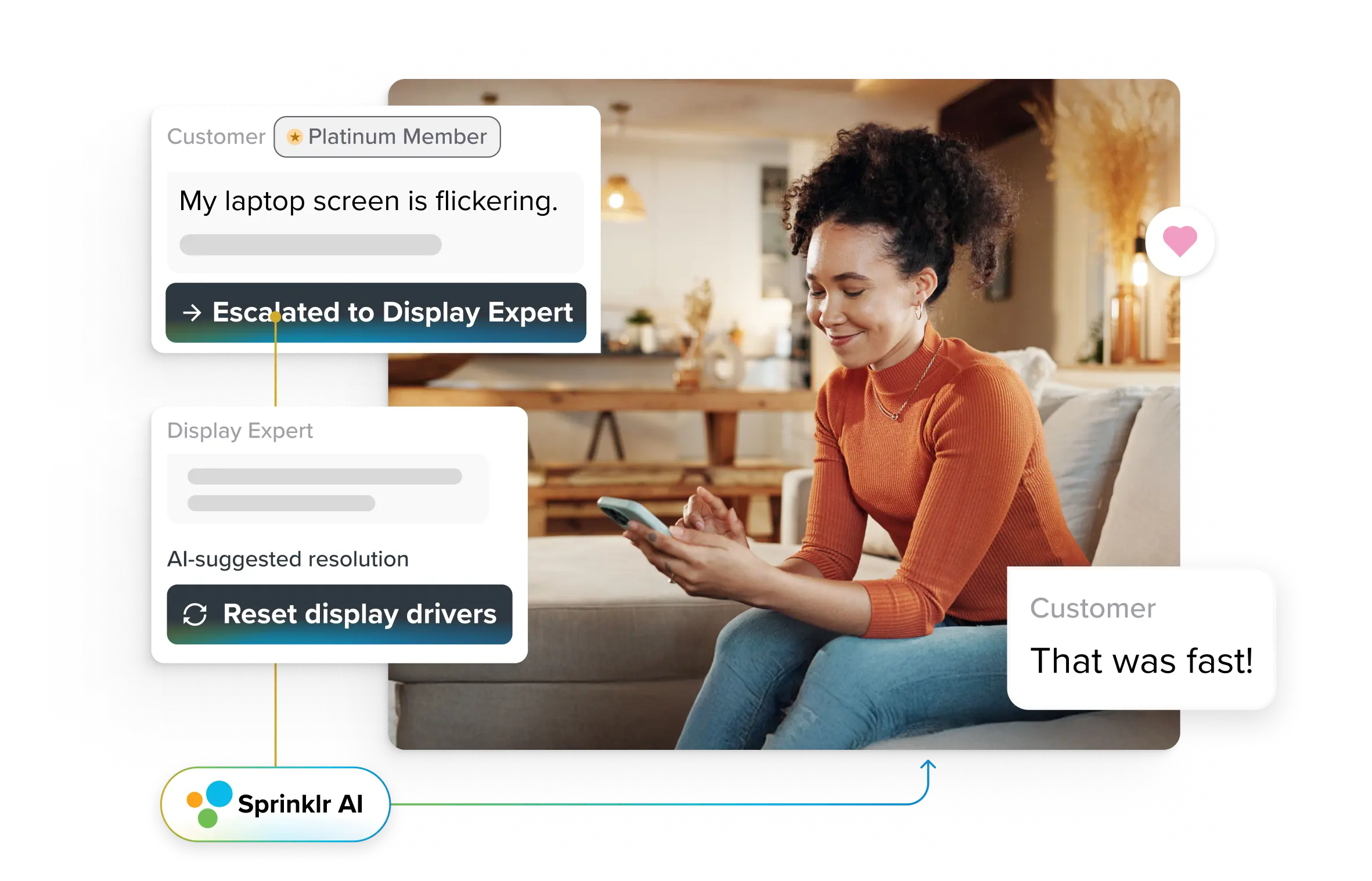
Call Center Workforce Management & How to Cut Attrition
Knowing customer service and experience are key differentiators, enterprises today invest heavily in their call center workforce despite realizing their agents are burned out and may leave anytime, ultimately increasing their rehiring and training costs.
Call center workforce management (WFM) helps here, ensuring the call center has the correct number of skilled agents equipped with tools to handle the growing workload without burning out or compromising CX quality.
Insufficient WFM can lead to call center burnout, which 88% of agents, according to SQM Group’s research, consider one of the biggest challenges and factors for attrition.
Read on to discover how call center workforce management has advanced beyond spreadsheets and basic performance reviews, utilizing AI-powered scheduling, automated after-call work, intelligent routing, and self-performance management to help supervisors cut attrition, focusing on enhancing CX rather than blindly chasing targets.
Preliminary Read: Workforce Management: Step-by-Step Process & Benefits
What is workforce management in a call center?
Call center workforce management is the practice of forecasting demand, scheduling staff, monitoring performance, and adapting operations to ensure service levels are met, without burning out your team.
Traditionally, WFM relied on spreadsheets, static shift templates, and reactive reporting, making it difficult to adapt to sudden volume spikes or evolving customer needs.
Modern, AI-driven workforce management platforms have transformed this landscape. Advanced systems now automate forecasting, simulate staffing, optimize real-time schedules, and provide live performance dashboards for call center supervisors. These innovations replace manual guesswork with data-driven agility, making the call center more resilient and responsive.
The foundation of effective WFM is a chain of interconnected objectives that ensure your operations run at their best. Here are the 5Rs every enterprise should master:
- Right people: Ensure the correct number of agents are available to meet predicted demand
- Right skills: Assign agents with the expertise needed for every interaction
- Right time: Align scheduling so agents are available when customers need them most
- Right channel: Direct requests to the optimal channel for resolution
- Right cost: Balance operational efficiency with employee satisfaction and business goals
Think of an enterprise that ramps up support staff with specialized skills just before a global product launch. By anticipating the right volume, matching skillsets and deploying resources on the proper channels, they maintain smooth service, hit SLAs, and keep costs and burnout in check.
Still, why does call center workforce management matter?
WFM directly and indirectly influences critical business aspects. Let’s look at the benefits of workforce management in call centers:
Lower operational costs
According to Gartner, only one in three customer service reps is engaged at work and disengaged reps are 84% more likely to seek a new job. Replacing a single agent costs an average of $14,113 when you factor in recruiting, onboarding and training.
WFM systems help tackle this by optimizing schedules, minimizing overstaffing, giving agents more control, improving engagement, reducing turnover and lowering the overall cost of operations.
Important for customer experience
As highlighted initially, customer experience is the leading competitive differentiator for 89% of businesses.
Workforce management ensures the right agents are available and prepared, meaning faster responses, fewer dropped calls and consistent service. This directly translates to higher customer satisfaction (CSAT) and net promoter scores (NPS).
Compliance and risk management
Contact centers must follow strict regulations such as GDPR for data protection and TCPA for telemarketing in the US, where violations can lead to fines of $500 per call.
WFM tools automate agent assignment and call routing based on compliance needs, help track consent, and ensure proper logging, reducing exposure to legal risks.
Address burnout and help create a healthier work culture
Discussions on platforms like Reddit reveal the reality for many agents: constant pressure to keep up with new scripts, KPIs and micromanagement while facing challenging customer interactions.
Modern WFM features, such as self-service scheduling, AI-driven coaching, and real-time knowledge prompts, ease this pressure, giving agents a sense of control, reducing burnout and fostering a healthier, more sustainable work environment.
While these challenges are real, not everything you hear about workforce management is accurate. Let’s clear up a few common myths.
Deep Dive: How does Workforce Management (WFM) benefit your company?
3 common myths about call center workforce management
Myth | How WFM solves it |
Many leaders believe workforce management is only about cutting costs, often associating it with reduced headcount or tight budgets. | Modern WFM balances cost with employee experience and customer outcomes. For example, AI can optimize schedules so teams are never over- or understaffed, improving service levels while keeping payroll and turnover in check. |
Rigid schedules are the only way to hit targets, since traditional thinking says fixed shifts and strict adherence ensure coverage. | Flexible, AI-driven scheduling enables better coverage and happier agents. A dynamic system can auto-adjust shifts or offer split hours during peak demand, letting agents balance work and life while still achieving SLAs. |
WFM is only relevant for large call centers, so smaller operations believe it’s too complex or unnecessary for them. | Even small and mid-sized centers see significant benefits from smart WFM tools. For example, a 25-agent team can use self-service shift swaps and real-time dashboards to boost engagement, reduce scheduling conflicts and deliver a consistent customer experience. |
7 call center workforce management moves to cut attrition fast
After working with leading enterprises for years, we’ve seen firsthand how workforce challenges can drive up attrition if not addressed proactively. Every center is unique, but when tailored to your environment, these strategies can deliver rapid, measurable results.
1. Run weekly adherence reviews to spot and solve scheduling gaps
Regular adherence reviews involve analyzing agent attendance, schedule alignment and real-time coverage every week. Instead of waiting for monthly reports, supervisors use these quick reviews to identify areas where agents consistently miss shifts or coverage doesn’t match demand.
By catching these gaps early, you can adjust forecasts, realign schedules and prevent chronic over- or understaffing, key drivers of burnout and disengagement. This hands-on, data-driven approach helps agents feel supported rather than penalized, lowering frustration and reducing turnover before it takes root.
Expert Advice: Modern workforce management tools like Sprinklr are powered by AI and have built-in functionality to share real-time adherence updates with supervisors.
It can detect deviations from schedules, such as breaks, logins and logouts, that agents take in real time and it provides a user-friendly view for management.
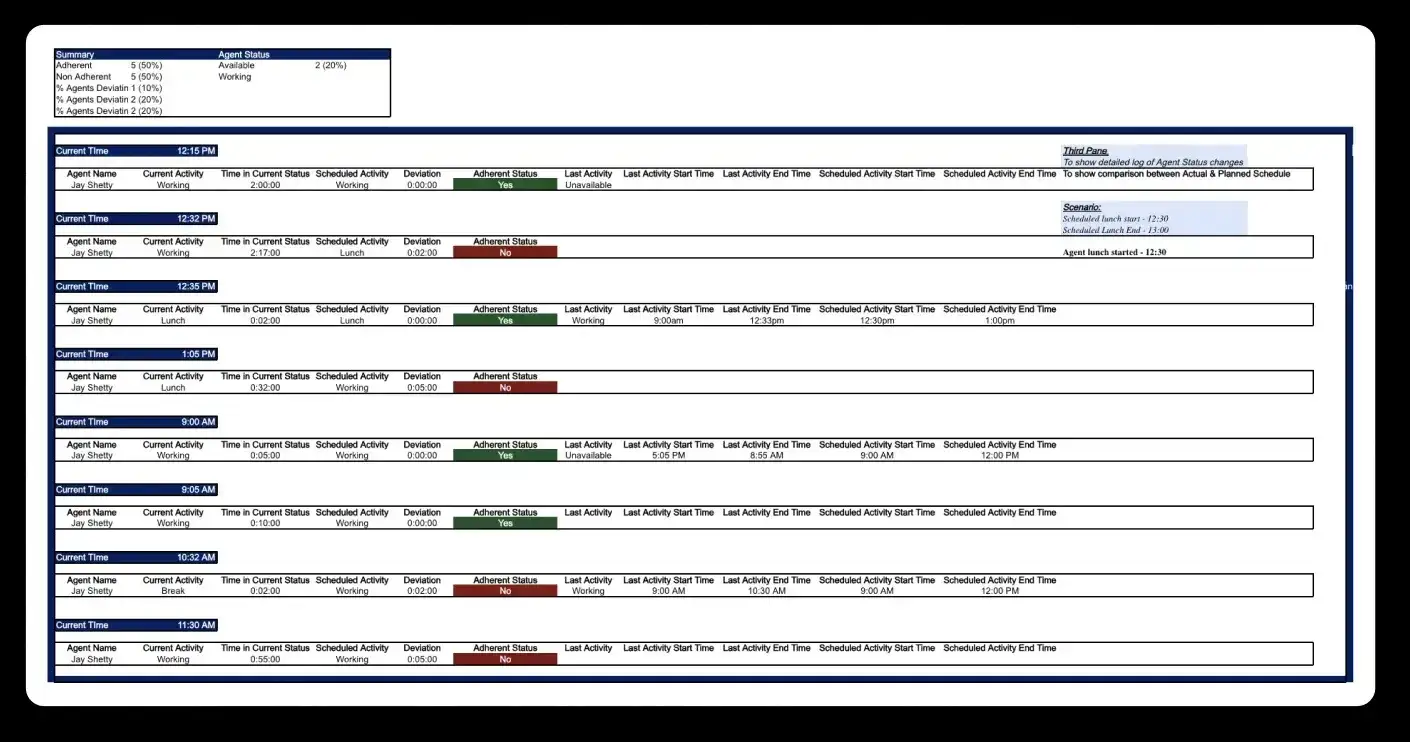
2. Offer flexible scheduling and shift swaps
Flexible scheduling lets agents choose partial shifts, split hours or easily swap shifts with teammates, all managed through workforce management software. This flexibility supports work-life balance, allowing agents to adjust their schedules for family, studies or personal needs.
When agents have more control over when and how they work, they’re less likely to burn out or leave. Providing these options shows trust in your team, builds loyalty and significantly reduces attrition.
Note: The workforce management tool discussed above also has built-in features like shift bidding. This feature offers agents early access to upcoming shifts so they can share preferences for maximum efficiency.
3. Launch a micro-recognition program
A micro-recognition program rewards agents for everyday achievements with points, badges or quick shout-outs. It celebrates big wins and the steady effort behind good customer service. Recognition can be automated or supervisor-led and integrated right into your WFM platform.
When agents feel seen and valued for their daily contributions, morale rises, engagement improves and the urge to look for opportunities elsewhere drops. Small, frequent recognition goes a long way in building a loyal, stable team.
The following is an example of an employee from Cato Networks being recognized for their performance.
4. Survey agents monthly to spot burnout early
Monthly pulse surveys allow agents to share their feelings, flag stressors and suggest improvements, without waiting for annual reviews. These short, focused check-ins surface signs of disengagement or burnout before they become serious retention risks.
By acting quickly on this feedback, leaders can address concerns, adjust workloads and show agents their well-being is a priority, making them more likely to stay and thrive.
Expert Advice: Invest in a supervisor console to give your leaders real-time visibility into every agent’s performance.
Modern, AI-powered consoles help supervisors monitor each case, identify coaching needs and spot early signs of disengagement, so they can make timely, data-driven decisions on scheduling, development and support.
This focused attention helps resolve issues before they become reasons for attrition.
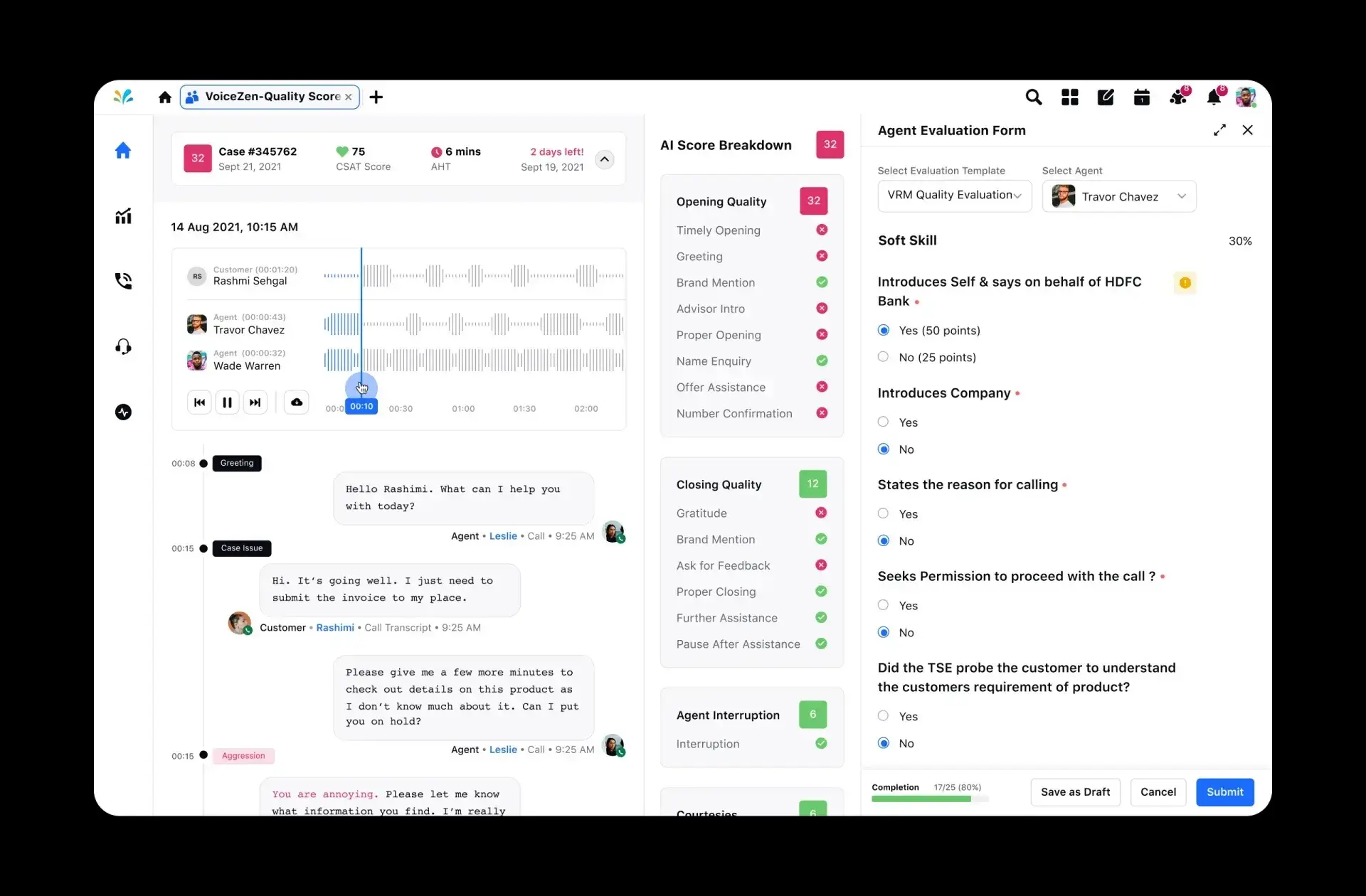
Related Read: Why Supervisor Console is important for brands?
5. Provide self-paced microlearning modules
Microlearning modules let agents refresh skills or learn new processes at their own pace without distracting them from daily tasks. These bite-sized lessons are integrated into the workflow and tailored to agents' needs.
Ongoing, self-directed learning keeps agents confident and adaptable, helping them manage change and reducing the frustration that often leads to burnout or turnover.
Note: If you invest in the supervisor console suggested above, you also get to use AI-driven agent upskilling. This feature automatically conducts AI-powered audits to spot skill gaps in your agents’ performance and assign relevant learning material to bridge them.
Helpful Read: What is Call Center Agent Training
6. Automate after-call work for agents
Automating after-call work (ACW) uses AI and workflow tools to handle tasks like call summaries, case updates or follow-up scheduling, freeing agents from repetitive admin. This lets agents focus more on customer interactions and less on paperwork.
By reducing manual workload, agents experience less fatigue and can end each shift with fewer loose ends, making the role more rewarding and helping retain top talent.
Expert Advice: Today’s market already has the right tool to automate after-call work. Get an AI agent assist software to completely automate post-call tasks. It automatically detects and prefills case dispositions using generative AI. This will reduce valuable agent time and energy for critical cases.
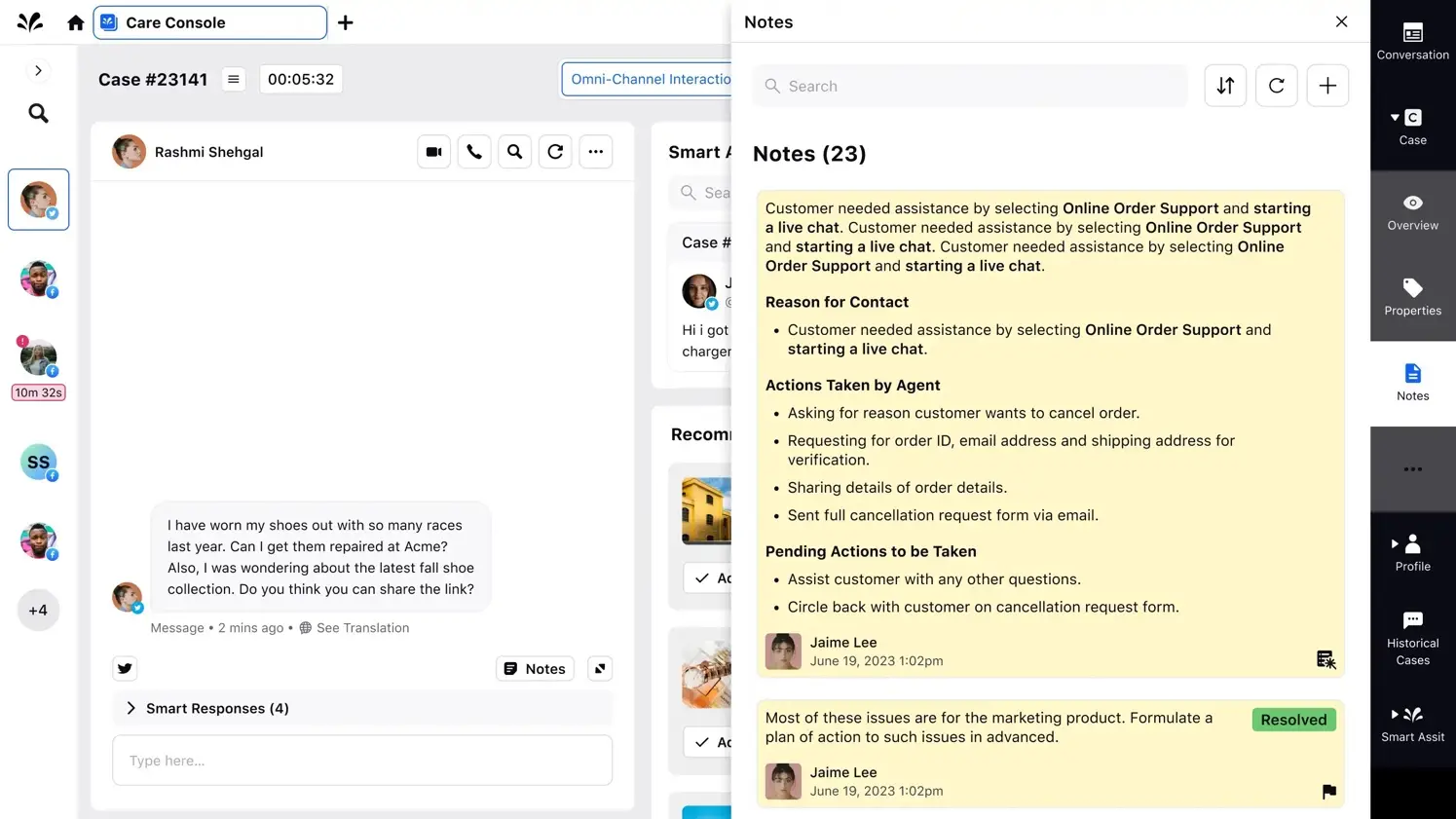
Enlighten Yourself: AI in Customer Service: How to Cut Costs, Not Quality
7. Track the right workforce management metrics
The right metrics give leaders a clear, actionable view of agent engagement, workload and performance.
Rather than getting lost in endless data, focus on tracking a select set of KPIs that reveal both risks and opportunities to reduce attrition. When you monitor what matters, you can address issues before they impact your team or your customers.
Recommended Read: How to Calculate and Reduce Call Center Shrinkage Effectively
5 essential metrics to monitor
Schedule adherence
If an agent was scheduled for 8 hours and worked 7.5 hours, adherence is (7.5 ÷ 8) × 100 = 93.75%. High adherence shows reliable coverage, while frequent gaps may signal burnout or disengagement.
Average handle time (AHT)
If agents spend 600 minutes handling 40 calls, AHT is 600 ÷ 40 = 15 minutes. Tracking average handle time helps balance workloads and spot training needs.
Agent attrition rate
If five agents leave in a quarter from a 50-agent team, attrition is (5 ÷ 50) × 100 = 10%. Rising attrition signals a need for intervention.
First contact resolution (FCR)
If 320 out of 400 customer issues are resolved on the first try, the FCR is (320 ÷ 400) × 100 = 80%. A high first contact resolution means fewer escalations and less agent stress.
Agent satisfaction score (internal NPS or eNPS)
If 70% of agents are promoters and 10% are detractors, eNPS is 70 – 10 = 60. A healthy eNPS reflects high engagement and loyalty among your team.
Now, besides every tool and metric, you need something extra! A mindset shift.
Experience-led call center workforce management: The new playbook
Today’s high-pressure, high-turnover environment makes the agent experience a strategic priority. Experience-led call center workforce management takes modern WFM beyond efficiency and compliance.
It centers on every agent’s well-being, engagement and growth, recognizing that a positive employee experience is essential for operational excellence and lasting customer loyalty. Try these strategies:
Predictive wellness monitoring
- Set up AI-driven sentiment analysis on calls and chat logs to track agent tone and language shifts. Automate alerts for sudden drops in positivity or frustration increases.
- Encourage agents to opt in to sharing wearable or wellness app data (like heart rate, sleep or activity) with your WFM platform, so managers can receive real-time signals about rising stress or fatigue.
- Regularly review workflow and break patterns for each agent, using analytics to flag those who skip breaks, rack up overtime or suddenly work longer on complex cases.
- Schedule monthly confidential wellness check-ins powered by brief digital surveys to capture how agents feel physically and emotionally, then use the results to personalize support.
- Act on early warning signals by offering workload adjustments, mental health resources or temporary schedule flexibility, before burnout leads to absenteeism or attrition.
AI-powered career pathing and upskilling
➔ Use AI in your WFM software to analyze each agent’s performance data, interests and skill gaps. Then, the software will automatically suggest relevant courses, certifications or job shadowing opportunities tailored to their career goals.
➔ Integrate self-service development dashboards so agents can track progress, request upskilling or enroll in learning paths with just a few clicks.
➔ Build imaginative prompts into daily workflows that recommend microlearning modules or cross-training during natural downtimes, making learning seamless and non-disruptive.
➔ Recognize and reward completion of new skills with visible badges, internal mobility opportunities or fast-track promotion eligibility, motivating agents to keep growing.
➔ Collaborate with HR to create transparent career maps, so every agent sees a clear path forward and knows their organization is invested in their long-term success.
Must Read: Unveiling the Essence of Agent Training and Coaching in the Modern Workforce
Dynamic workflow orchestration
➔ Automate task prioritization so agents receive a balanced mix of case types, rotating between high-pressure and routine work, to maintain engagement and reduce fatigue.
➔ Integrate real-time feedback prompts, allowing agents to flag when they need a break or a task switch and dynamically shift the workflow without supervisor intervention.
➔ Use analytics to identify patterns where workflow bottlenecks lead to frustration, then continuously refine routing rules to optimize customer service and agent well-being.
Cut attrition at the source and build a future-ready workforce that doesn’t leave just like that
Workforce management can be achieved with all the strategies and tips we’ve shared, but to truly reduce attrition, evolve your workforce with emerging technology. Not just to lighten their workload, conserve their energy and make them feel more valued, but to help them feel part of a greater purpose.
Why? Gartner found that employees seek personal value and purpose at work. While 82% of employees say it’s essential for their organization to see them as people, not just workers, only 45% believe their organization sees them this way.
To get started, consider Sprinklr Service, a comprehensive set of AI-powered customer service tools, to upgrade your call center into a customer experience hub. Book a demo today.
Frequently Asked Questions
AI streamlines forecasting, scheduling and intraday planning. It reduces manual work, adapts to real-time changes and helps managers spot risks early. AI-powered tools boost efficiency, cut costs and help keep agents engaged.
Workforce management balances workloads, offers flexible schedules and ensures fair task distribution. By tracking stress and agent well-being, WFM tools help leaders catch burnout early and support agents before issues grow.
Key KPIs are schedule adherence, average handle time, agent attrition rate, first contact resolution and agent satisfaction score. Tracking these metrics helps managers optimize staffing and improve agent performance.
Start with clear goals and data-driven forecasting. Use self-service tools for agents, review schedules often and act on feedback. Integrate WFM with quality tools to streamline operations and boost engagement.
Workforce management focuses on staffing, scheduling and workload balance. Quality management reviews agent interactions and ensures service standards. Together, they keep operations efficient and customer service strong.









